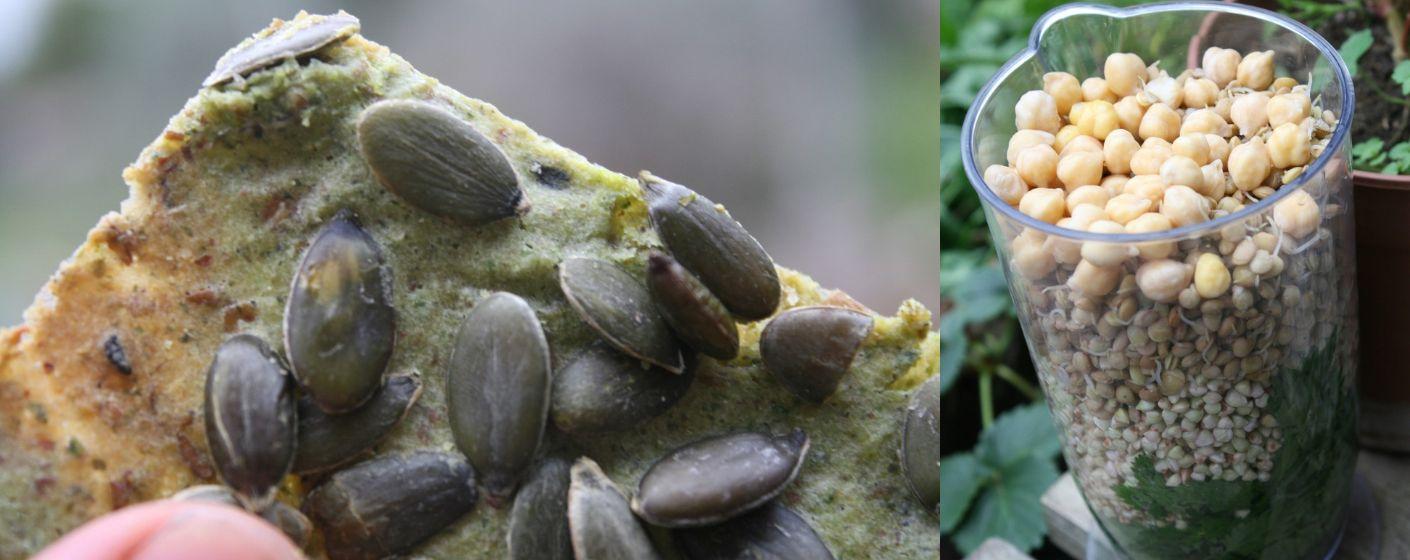Recipe from tour guide Karmit Arbel Rumbak
“I used to teach sustainability courses, and through a cooking workshop, I was able to touch on a lot of topics that are important to me, such as local economy, consumer culture, nutrition, foraging, the importance of biodiversity, and of course, talk about our good friends, the symbiotic bacteria. So when I started guiding foraging tours and learning about the medicinal properties of wild plants, I had the idea to try adding nettles, which are full of iron and plenty of other minerals, to my favorite crackers.” – Karmit

So here’s the recipe.
- I soaked green buckwheat in water, pulled sprouted lentils and chickpeas from the freezer, and went for a quick walk outside to pick some nettles. The ratio is about a third of each, but it’s not critical. You can also make the crackers with just one type of legume and make half and half with green buckwheat that has been soaked in water for at least an hour.
- Then I blended everything (with the addition of olive oil, Himalayan salt, and tahini) into a batter that was close to “tahini,” spread a thin layer on a baking sheet, and sprinkled some with sesame seeds.
- I baked it for about 8 minutes, took it out to mark cuts with a knife, and baked it again until they were crunchy.
“The crackers were snatched up by the kids as soon as they came out of the oven, so I went out onto the balcony to take a picture of a single cracker that was almost snatched by the neighbor’s cat…
In short, the experiment was a success!
By the way, if you feel like making colorful crackers, then we liked the pink crackers (I used beets).
If you don’t have nettles available, you can simply gather some moss or rosemary that you have nearby….
Enjoy your meal!
I won’t write everything I have to say about the crackers here, but I will just point out that green buckwheat is not a grain but a “fruit” and therefore these are gluten-free and kosher crackers for Passover.
And if you are wondering why it is important to soak and sprout the chickpeas/lentils/buckwheat in the recipe, then you are welcome to read about phytic acid, the importance of minerals for our body, and why you should soak and sprout.
(And of course, you are welcome to come to the various tours I do following the wheat where I talk about the subject in detail).”
– with love Karmit!
 עברית
עברית
